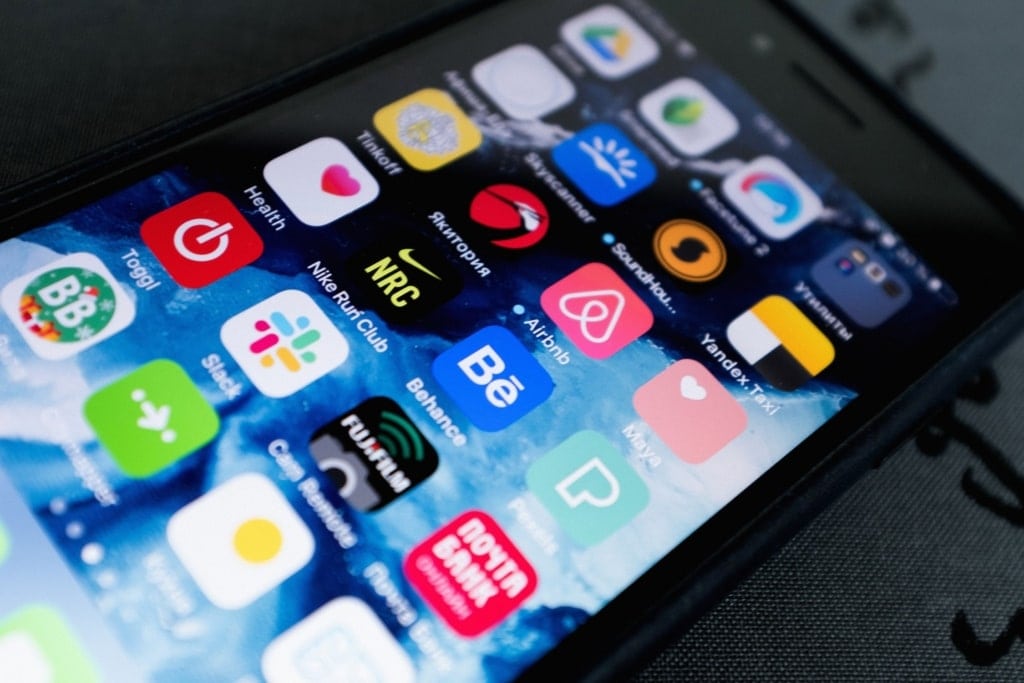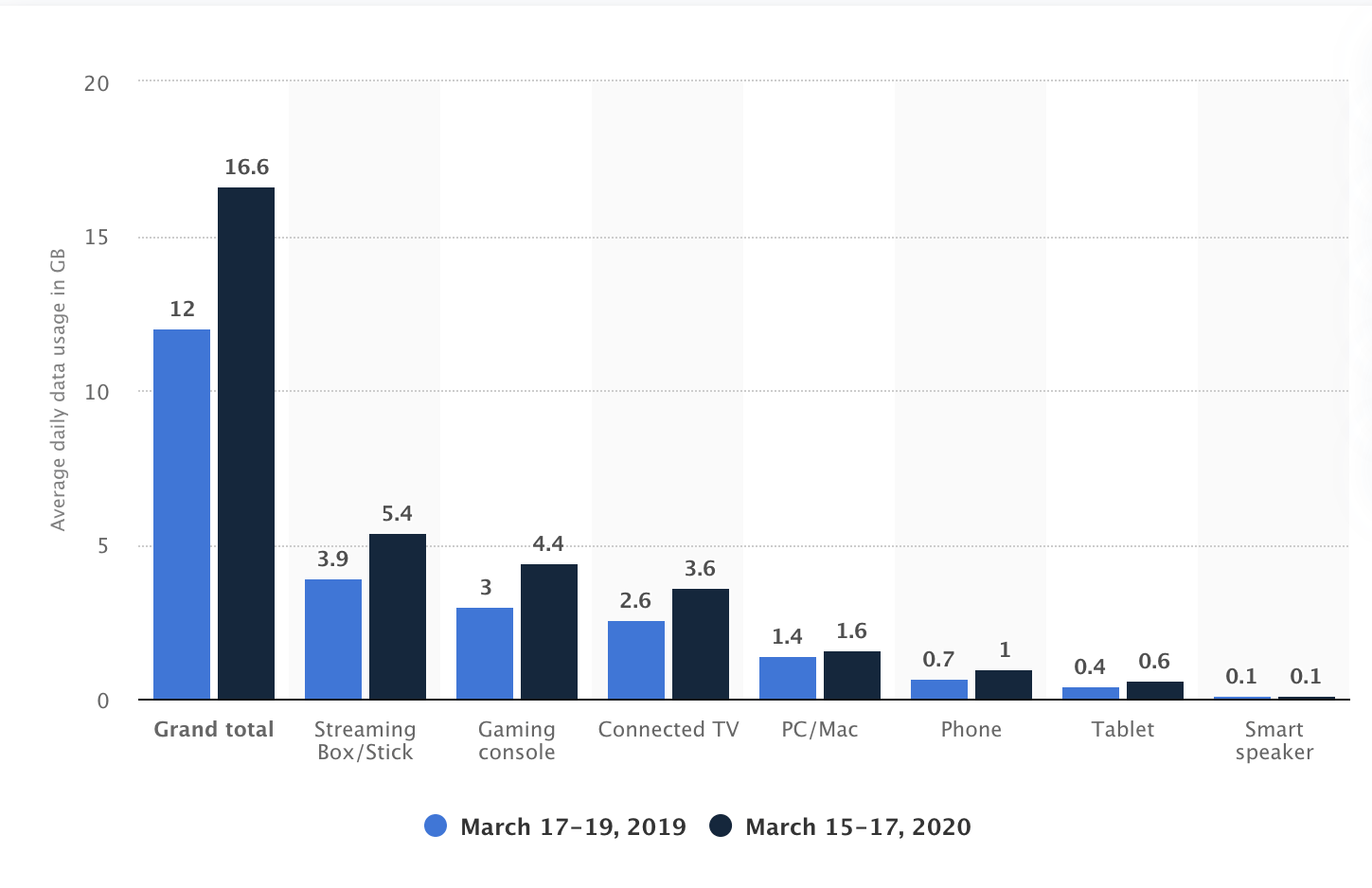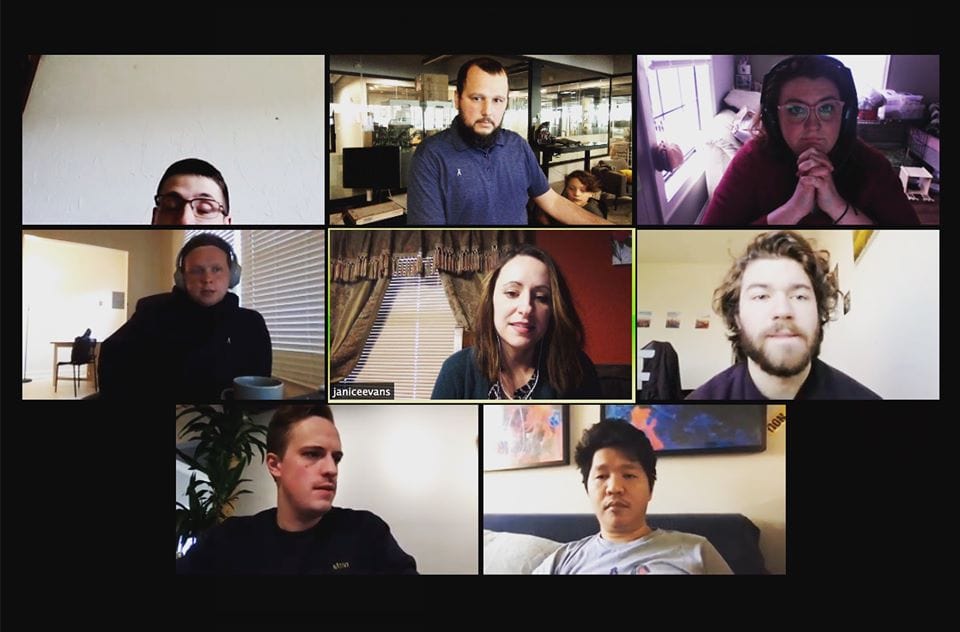How Mobile Apps Are Reimagining B2C Relationships in the Quarantine Age

Let’s pretend that we have a little time machine that could take us back to the week before you quarantined. If you gathered data on your online activity, would it look different than it did in mid-March? June? Today? What about how often you opened mobile apps like TikTok, Discord, and Zoom?
According to Statista, the average in-home daily data usage jumped from 12 GB to 16.6 GB compared to March of last year. In unprecedented times, we are consistently turning to our devices, and specifically mobile apps, for outlets to destress, reconnect, and work in a world that is becoming increasingly isolated.
Despite the fact that websites have seen a marked uptick in use compared to apps, businesses are still making good use of the ease and convenience of mobile devices to continue reaching customers. In fact, some have completely changed the way that we think about access, connectedness, and the power we have as both businesses and consumers.
Let’s look at some prime examples of industries and apps that found their stride despite the uncertain landscape of quarantined America:
TeleHealth
The saying goes that necessity is the mother of invention, and nothing speaks to that sentiment better than the health and medicine industry. Despite being an absolutely necessary service for the well-being of Americans who weren’t dealing with COVID-related illness, special consideration and major changes had to be implemented to accommodate both treatment of Coronavirus patients and those who were dealing with other health concerns.
With that, telehealth apps were born… Or at least experienced an insane growth spurt. In order to protect non-infected patients, while still providing necessary (if not critical) medical services, many private practices, clinics, and specialists opted in for digital services. Instead of having patients come in for consultations, prescription refills, or easily diagnosed conditions, doctors began setting up digital appointments that not only protected patients from entering infection hot spots, but also saved time for everyone involved.
We got to see the value of telehealth applications firsthand with our build of the myEsthi mobile app, the goal of which was to connect customers digitally to a licensed esthetician in order to receive skincare recommendations from a professional. Once the consultation was over, patients could pop over to the built-in shop to purchase any recommended products, which also prevented venturing outdoors to shop around for skincare.
Zoom
In its first fiscal quarter (which ended April 30th), Zoom boasted a customer growth rate of 354%, along with a leap from 10 million daily meeting participants in December of 2019 to 300 million daily meeting participants in April of 2020. It booked over 2 trillion meeting minutes in just 3 months, with revenue soaring up to $328 million, a 169% increase.
That’s all to say, our need to stay in contact for work, fun, or psychological health put Zoom in the spotlight. Across the globe, every industry that could work from home was signing on for Zoom’s promise of an easy, intuitive way to video conference. One of the biggest beneficiaries of Zoom was education, giving teachers and students a way to continue (to the best of their ability) the learning process in the uncharted territory of holistically virtual education.
Families and friends also found Zoom to be the ideal way to “meet up” for everything from game nights to weddings. Vogue even dropped an article on the best way to plan for your virtual nuptials, including hiring event planners who were becoming specialized in video conference marriages. Their recommendation for software? Zoom, of course.
In fact, our own team enjoyed Friday evening happy hours, giving us the chance to catch up, despite not being in the office together.

Aren’t we cute?
Discord
We’ve talked ad nauseam about the capabilities of Discord in the B2C world, but it bears repeating:
“What was once reserved for streamers, gamers, and those who already participated in online communities quickly become a hub for everyone from book clubs to biology classes to gather, meet, and communicate in a time when social interaction was severely limited. Within those communities, it quickly became obvious that the platform has a lot to offer beyond sending instant messages.
But why should businesses, streamers, and online content creator care? As customers become more and more tech savvy, there is a certain level of pressure on you to keep up with popular demand. While not all industries can benefit from the features that Discord has to offer for anyone looking for strategies to stay in touch with their audience in accessible, interactive, and exciting ways”
You can read more about the benefits of Discord in B2C relationships in our three part series found here, here, and here.
Twitch
If you thought Discord was focused on video games, insanely popular online streaming service Twitch ups the ante ten-fold. Yet, many outside of the gaming industry found their niche, honed their art, and stayed in touch with their loyal followers amongst the normal COD and League of Legends streamers.
Streamlabs reports that in Q1, Twitch hit all-time highs for hours watched and hours streamed, actually surpassing 3 billion hours watched.
Other statistics include:
- A 23% increase in watch hours from February to March
- A 17% increase in watch hours compared to Q4 of 2019
- 65% representation of marketshare
- 20% increase in the number of hours streamed, despite steadily falling rates throughout 2019
- 33.3% more unique channels
Along with gamers, athletes, artists, musicians, and entertainers used the platform to stay connected with their followers, including raising money to help provide relief during uncertain economic times. In fact, the sudden surge in non-gaming related activity seems to have convinced the company to change their tact on limiting streams that weren’t focused on video games. While it was once pretty strict about content categories, they’re planning to branch out with tools and support for vlogging, comedy, art, and general entertainment.
TikTok
Ah, TikTok. We love to hate it, and we hate to love it. Since the sad death of Vine (RIP), we’ve been craving apps that offer lightning-fast, clever entertainment that was relatable, shareable, and, perhaps, even a little informative.
Even if you had resisted the siren call pre-quarantine, boredom and isolation fueled an 18% increase in downloads during the week of March 18th, compared to the week before, and a 27% increase from February to March.
If you’ve ever fallen down the TikTok time warp, spending countless hours scrolling, sharing, and perhaps even creating content, it’s not hard to see why COVID-19 turned into a catalyst for the app’s popularity. Along with the normal lip syncs and “get ready with me” videos, creative folks of all ages began sharing what it was like living in isolation, and what they were doing to cope.
Families are showcasing their DIY renovations, couples shared silly stories about working from home, and teenagers sparked up home businesses selling their art. Cute puppies, heart-wrenching stories of unemployment, inspirational messages, a delightful resurgence in watching anime… All of it comes together in one place, where it’s easy to catch a break from the stress of living during a global pandemic.
What Can You Do with Apps?
Back when iPhones first came out, apps were all fake lighters and terrible games. Now, they let us do things we could have never fathomed back in the ancient times of 2007– shopping, going to the doctor, teaching people how to dance, learning to play an instrument… the possibilities are literally endless.
If you’re struggling to find ways to revamp, make your comeback, or simply engage your customers better than you have been able to in the past, chat with us about how mobile apps can breathe new life into your business. It might be as easy as creating a TikTok account and learning all the words to Say So by Doja Cat.